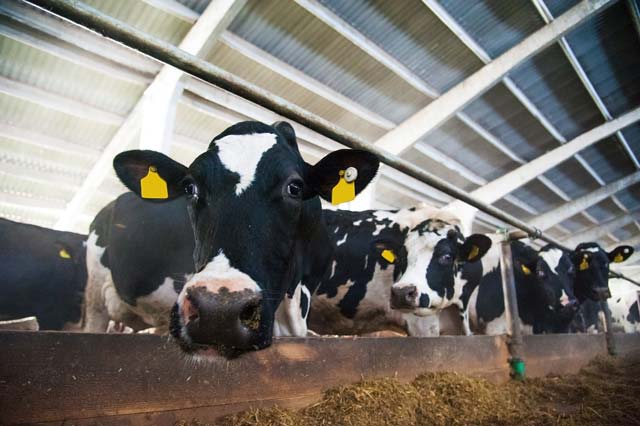Uncovering True Feed Costs
Oct 24, 2023

Costs of feed inputs are easy to scrutinize, but often the rest of the costs incurred when feeding animals are not considered when determining what feed to buy or where to buy it.
Feed is the most significant cost of livestock production. Depending on the type of operation and livestock species, these costs can be as high as 70% of production costs. Often the delivered price of a commodity or grain blend is the single factor used for a purchasing decision. However, estimating the true feeding costs also means calculating on-farm transportation, labor, storage, and waste or shrinkage. The purchase price is only the beginning.
Value of Different Feed
Basic nutrition allows feed consultants to select appropriate feedstuffs by analyzing the cost per pound of dry matter (DM), cost per pound of total digestible energy (TDN), as well as cost per pound of crude protein (CP). These factors are used to purchase feed inputs by calculating the total amount fed and used by the animal. The digestibility or amino acid profile of ingredients may also be addressed to ensure the right components are available to maximize production, whether for meat, milk, or reproduction. Addressing nutrients of the final ration is helpful in identifying shortcomings of the basic DM, TDN, and CP analysis. Not all ingredients are created equal.
The consistency and quality of the ingredients also have an impact on profitability and animal performance. Providing animals with the same ratio of ingredients prescribed by the ration is crucial. Not all on-farm feed mixers can correctly disperse small quantities of medications or feed additives, especially in forage-based diets. These items are more appropriately blended in a larger volume of soybean meal or ground corn, to ensure consistent distribution. Quality is imperative to palatability, animal health, and digestibility. Appropriate processing of grain, including micron size of ground corn, should be evaluated regularly. A difference of 100 microns could fluctuate milk production by as much as 1.5 pounds per day. Animal feed manufacturing is now required to comply with Current Good Manufacturing Practices (CGMP) as prescribed under the Food Safety Modernization Act. This includes baseline safety and sanitation requirements for the manufacturing, packaging, processing, and holding of animal feed to ensure its safety, especially for animals that produce or are harvested for human consumption. Know your feed source and their quality control program.
Feeding Costs
It is important to measure a feed’s value during the time between delivery and being fed. This includes checking dry matter – if the product dries in storage, the feeding rate needs to be adjusted to avoid overfeeding because of a change in dry matter. If the delivery cost is not included in the feed price, a transportation cost must be assigned. Assessing any product lost in delivery, as well as storage, must be added to the cost. Product loss could be due to spoilage, wildlife or rodent damage, and weather events like rain or wind. Monitoring shrinkage is important. A 5% shrink of bloodmeal costing $1000 per ton results in an additional $50 per ton or $1200 per load.
The final phase in assessing true feed costs is the process of feeding the animals. This phase may require labor, machinery to feed, plus facilities used to supply feed, like feed bunks, concrete, and commodity sheds. Equipment, fuel, and the parts to repair are costly and often challenging to source. Quality labor costs a premium yet reducing costs of labor may create more costs of shrink as described above but with inaccurate feeding rates. For instance, an additional 100 lb of bloodmeal in one TMR mix equals an added $50 per occurrence. This last phase is often overlooked in true feed costs. However, it can be the costliest from a man-hour and equipment cost standpoint.
Commitment to Feed
The Feed Team at United Cooperative has a commitment to feeding livestock. United performs regular testing of milling and processing equipment, plus analysis of ingredients and manufactured feeds. The Nutrition Specialists and Feed Location Teams spend the necessary time to answer questions on feed costs, animal performance, and management to maintain maximum performance and profits for all sectors of animal production agriculture. Rely on us for your animal feed needs.